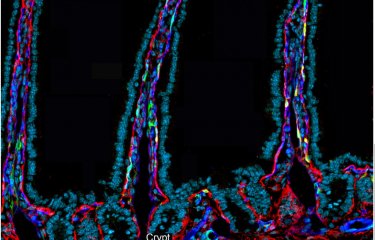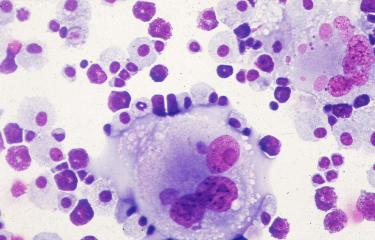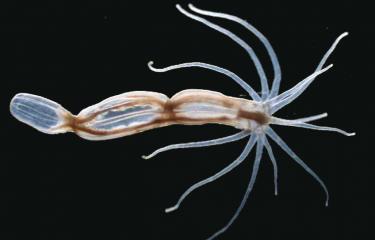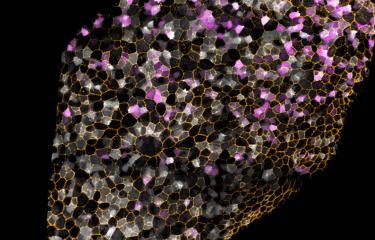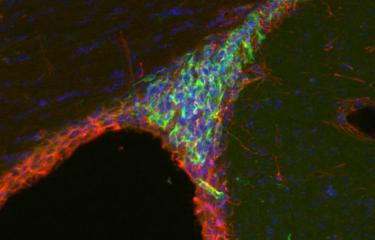Hepatic insufficiency, cirrhosis, liver cancer, etc.: damage to the liver is varied and in serious cases the only alternative is to transplant a healthy organ. However, the lack of available organs limits this practice: in France in 2002, 882 liver transplants were carried out for 1,509 transplant candidates.* Hope for the future is directed towards being able to transplant stem cells capable of differentiating into hepatocytes and multiplying in the liver to regenerate it. While we are still far from applying this to humans, research using animal models is active. A project conducted by a team from the Institut Pasteur in association with the CNRS, and published in PNAS, should make it possible to accelerate knowledge considerably in this field.
Press release
Paris, may 25, 2004
Mary Weiss’s team (Genetics of Differentiation Unit, Institut Pasteur/CNRS URA 2578) obtained lines of nontransformed embryonic hepatic stem cells from mice-in other words, cells incapable of producing tumors in the animal models tested. In collaboration with the Institut Pasteur/INSERM Liver Cancer and Molecular Virology Unit, these cells were transplanted into mouse models of hepatic degeneration, where they colonized, proliferated, and differentiated into liver cells (hepatocytes), as well as bile duct cells. The researchers demonstrated that the cells were perfectly functional.
The advantage of the system developed by the scientists lies in obtaining stable lines of hepatic stem cells: they consequently have cells that can be stored, then multiplied as desired, which are important characteristics for cell therapy. Furthermore, it is possible to envisage introducing genes prior to transplant (combining cell therapy with gene therapy): for example, a gene that could control the multiplication of these cells; or a suicide gene that would make it possible to eliminate them easily in case of a problem; or even a corrective gene in the case of a transplant into the liver of an individual with an inherited liver disease.
All these routes must now be explored by the researchers, who are also seeking to obtain lines of adult hepatic stem cells. The development of adult hepatic stem cell lines would pave the way to the use of the recipient’s own cells, and would facilitate this therapy’s future from an ethical, as well as from a practical point of view. The immune response of the host against the transplanted cells, which currently limits the success of cell therapy, could therefore be avoided.
These projects are conducted within the framework of the Institut Pasteur’s "Stem Cells" Horizontal Research Program, whose goal is to study various aspects of stem cells in animals (identification, multiplication, differentiation) and the possibilities of applying them to humans. This program brings together 15 research laboratories of the Pasteur campus and is run by Mary Weiss, director of the Genetics of Differentiation Unit (IP/CNRS URA 2578), and Jean-Michel Heard, director of the Retroviruses and Gene Transfer Unit (IP/INSERM 622).
* According to the Etablissement français des Greffes (French Transplant Establishment)
Sources
"Bipotential mouse embryonic liver stem cell lines contribute to liver regeneration and differentiate as bile ducts and hepatocytes" : PNAS, 1er juin 2004.
Hélène Strick-Marchand (1), Serban Morosan (2), Pierre Charneau (3), Dina Kremsdorf (2), et Mary Weiss (1)
1. Genetics of Differentiation Unit, URA 2578 of the CNRS, Institut Pasteur
2. INSERM Unit 370/Institut Pasteur, CHU Necker
3. Molecular Virology and Vectorology Laboratory, Institut Pasteur
Contact press
Institut Pasteur - Press office
Nadine Peyrolo
01 45 68 81 47 - npeyrolo@pasteur.fr
Corinne Jamma
01 40 61 33 41 - cjamma@pasteur.fr
CNRS - Press office
Isabelle Tratner
01 44 96 49 88 - isabelle.tratner@cnrs-dir.fr




